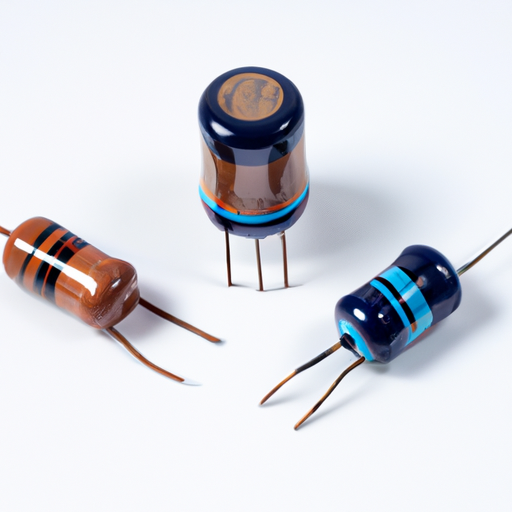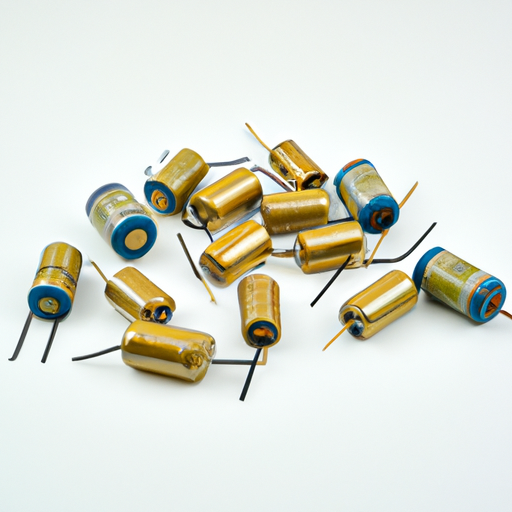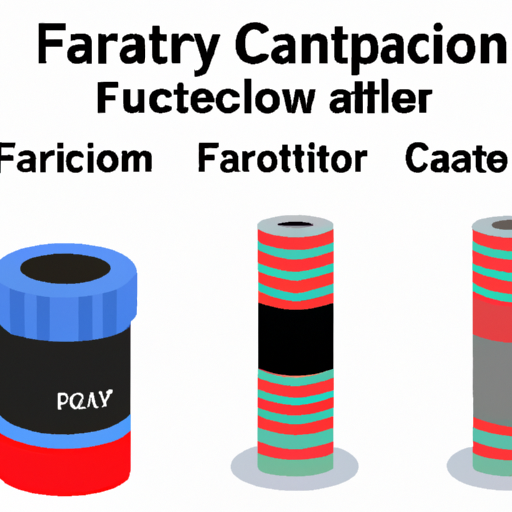What are the product standards for capacitor compensation?
What are the Product Standards for Capacitor Compensation?
I. Introduction
Capacitor compensation is a critical aspect of electrical engineering, particularly in power systems. It involves the use of capacitors to improve the power factor, stabilize voltage levels, and enhance the overall efficiency of electrical networks. As the demand for reliable and efficient power systems grows, so does the importance of adhering to product standards in capacitor compensation. These standards ensure safety, performance, and compatibility across various applications. This blog post will explore the product standards for capacitor compensation, the organizations that set these standards, and the challenges and future trends in this field.
II. Understanding Capacitor Compensation
A. Explanation of Capacitor Compensation
Capacitor compensation serves several purposes in electrical systems. Primarily, it is used to correct the power factor, which is a measure of how effectively electrical power is being converted into useful work output. A low power factor indicates poor efficiency, leading to increased energy costs and potential penalties from utility companies. Capacitors help to offset inductive loads, thereby improving the power factor and reducing energy losses.
B. Applications in Electrical Systems
Capacitor compensation is widely used in various applications, including industrial plants, commercial buildings, and utility systems. In industrial settings, capacitors are often employed to support large motors and other inductive loads. In commercial buildings, they help to maintain voltage levels and improve energy efficiency. Utilities use capacitor banks to manage reactive power and enhance the stability of the grid.
C. Types of Capacitor Compensation
There are several types of capacitor compensation, each serving different functions:
1. **Shunt Capacitors**: These are connected in parallel with the load and are commonly used to improve the power factor in distribution systems.
2. **Series Capacitors**: These are connected in series with the transmission line to increase the line's capacity and reduce losses.
3. **Synchronous Condensers**: These are rotating machines that can provide reactive power support and are often used in large power systems.
III. Regulatory Bodies and Standards Organizations
A. Overview of Key Organizations
Several organizations play a crucial role in setting product standards for capacitor compensation:
1. **International Electrotechnical Commission (IEC)**: The IEC develops international standards for electrical and electronic technologies, including capacitor compensation.
2. **Institute of Electrical and Electronics Engineers (IEEE)**: IEEE is a leading organization that creates standards for electrical and electronic systems, focusing on safety and performance.
3. **Underwriters Laboratories (UL)**: UL is an independent safety certification organization that tests and certifies products for safety and performance.
4. **National Electrical Manufacturers Association (NEMA)**: NEMA develops standards for electrical equipment, including capacitors, to ensure safety and reliability.
B. Role of These Organizations in Setting Standards
These organizations collaborate with industry experts, manufacturers, and regulatory bodies to develop and maintain standards that ensure the safety, reliability, and efficiency of capacitor compensation systems. Their standards are essential for manufacturers to produce compliant products and for engineers to design effective systems.
IV. Key Product Standards for Capacitor Compensation
A. IEC Standards
1. **IEC 60871 - Shunt Capacitors for Power Systems**: This standard specifies the requirements for shunt capacitors used in power systems, including design, testing, and performance criteria.
2. **IEC 61071 - Insulation Coordination**: This standard provides guidelines for insulation coordination in electrical equipment, ensuring that capacitors can withstand voltage surges and other electrical stresses.
B. IEEE Standards
1. **IEEE 18 - IEEE Standard for Sizing of Shunt Capacitors**: This standard outlines the procedures for sizing shunt capacitors to achieve optimal performance in power systems.
2. **IEEE 1036 - Guide for the Application of Shunt Capacitors**: This guide provides recommendations for the application of shunt capacitors in various electrical systems, focusing on performance and reliability.
C. UL Standards
1. **UL 810 - Capacitors**: This standard covers the safety requirements for capacitors, including construction, performance, and testing criteria.
2. **UL 1995 - Heating and Cooling Equipment**: This standard includes requirements for capacitors used in heating and cooling equipment, ensuring safety and performance.
D. NEMA Standards
1. **NEMA MG 1 - Motors and Generators**: This standard includes guidelines for the use of capacitors in conjunction with motors and generators, focusing on performance and efficiency.
2. **NEMA C37 - Power Switchgear**: This standard provides requirements for capacitors used in power switchgear applications, ensuring safety and reliability.
V. Key Parameters and Testing Methods
A. Electrical Characteristics
When evaluating capacitors for compensation, several key electrical characteristics must be considered:
1. **Capacitance Value**: The capacitance value determines the amount of reactive power the capacitor can provide.
2. **Voltage Rating**: The voltage rating indicates the maximum voltage the capacitor can withstand without failure.
3. **Power Factor**: The power factor reflects the efficiency of the capacitor in improving the overall power factor of the system.
B. Environmental Considerations
Environmental factors also play a significant role in capacitor performance:
1. **Temperature Range**: Capacitors must operate effectively within specified temperature ranges to ensure reliability.
2. **Humidity and Moisture Resistance**: Capacitors should be resistant to moisture and humidity to prevent degradation and failure.
C. Testing Methods
To ensure compliance with standards, various testing methods are employed:
1. **Dielectric Testing**: This test evaluates the insulation properties of the capacitor.
2. **Endurance Testing**: This test assesses the capacitor's ability to withstand prolonged operation under specified conditions.
3. **Performance Testing**: This test measures the capacitor's performance under various load conditions.
VI. Compliance and Certification
A. Importance of Compliance with Standards
Compliance with product standards is crucial for ensuring the safety, reliability, and performance of capacitor compensation systems. Non-compliance can lead to equipment failures, safety hazards, and increased operational costs.
B. Certification Processes
1. **Testing Laboratories**: Independent testing laboratories evaluate capacitors against established standards to ensure compliance.
2. **Certification Marks and Labels**: Products that meet the required standards receive certification marks, indicating their compliance and reliability.
C. Consequences of Non-Compliance
Failure to comply with product standards can result in serious consequences, including product recalls, legal liabilities, and damage to a manufacturer's reputation.
VII. Challenges in Meeting Product Standards
A. Technological Advancements
Rapid technological advancements can make it challenging for manufacturers to keep up with evolving standards and ensure their products remain compliant.
B. Variability in Manufacturing Processes
Variability in manufacturing processes can lead to inconsistencies in product quality, making it difficult to meet established standards.
C. Global Market Considerations
As manufacturers expand into global markets, they must navigate different regulatory environments and standards, adding complexity to compliance efforts.
VIII. Future Trends in Capacitor Compensation Standards
A. Emerging Technologies
The development of new technologies, such as smart grids and renewable energy systems, is likely to influence future standards for capacitor compensation.
B. Sustainability and Environmental Impact
As sustainability becomes a priority, standards may evolve to address environmental concerns, promoting the use of eco-friendly materials and practices in capacitor manufacturing.
C. Anticipated Changes in Regulatory Frameworks
Regulatory frameworks are expected to change in response to technological advancements and environmental considerations, necessitating ongoing adaptation by manufacturers and engineers.
IX. Conclusion
In conclusion, product standards for capacitor compensation play a vital role in ensuring the safety, reliability, and efficiency of electrical systems. As technology continues to evolve, it is essential for manufacturers and engineers to stay informed about current standards and anticipate future changes. By adhering to these standards, the industry can continue to improve the performance of capacitor compensation systems, ultimately benefiting consumers and the environment.
X. References
1. International Electrotechnical Commission (IEC) Standards
2. Institute of Electrical and Electronics Engineers (IEEE) Standards
3. Underwriters Laboratories (UL) Standards
4. National Electrical Manufacturers Association (NEMA) Standards
5. Relevant literature and research articles on capacitor compensation and standards.
This comprehensive overview of product standards for capacitor compensation highlights the importance of compliance and the role of various organizations in maintaining safety and performance in electrical systems. As the industry evolves, staying abreast of these standards will be crucial for manufacturers and engineers alike.





